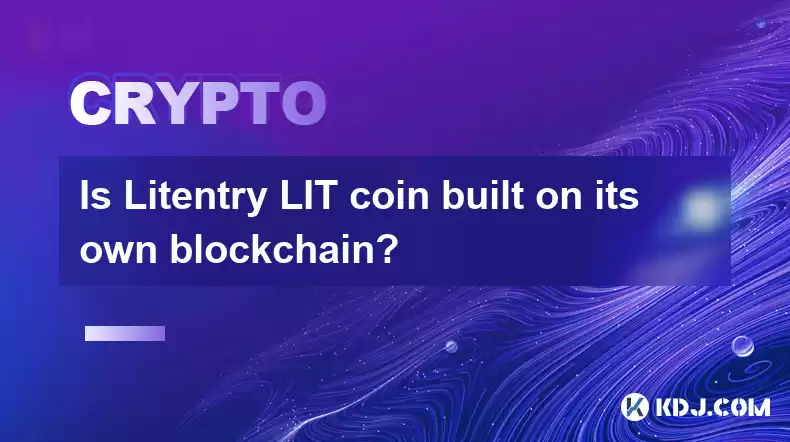-
 Bitcoin
Bitcoin $118600
0.36% -
 Ethereum
Ethereum $3855
1.06% -
 XRP
XRP $3.195
-0.09% -
 Tether USDt
Tether USDt $1.000
-0.04% -
 BNB
BNB $844.5
6.23% -
 Solana
Solana $191.3
2.83% -
 USDC
USDC $0.9997
-0.01% -
 Dogecoin
Dogecoin $0.2376
0.10% -
 TRON
TRON $0.3242
0.83% -
 Cardano
Cardano $0.8222
0.13% -
 Hyperliquid
Hyperliquid $45.26
6.53% -
 Sui
Sui $4.200
-2.56% -
 Stellar
Stellar $0.4336
-1.24% -
 Chainlink
Chainlink $18.86
0.28% -
 Hedera
Hedera $0.2796
-1.75% -
 Bitcoin Cash
Bitcoin Cash $583.3
-1.84% -
 Avalanche
Avalanche $27.06
8.09% -
 Litecoin
Litecoin $112.3
-1.16% -
 Toncoin
Toncoin $3.353
0.58% -
 UNUS SED LEO
UNUS SED LEO $8.968
-0.11% -
 Shiba Inu
Shiba Inu $0.00001395
-0.54% -
 Ethena USDe
Ethena USDe $1.001
-0.03% -
 Uniswap
Uniswap $10.76
0.69% -
 Polkadot
Polkadot $4.175
0.26% -
 Monero
Monero $326.7
1.07% -
 Bitget Token
Bitget Token $4.665
1.61% -
 Dai
Dai $0.9998
-0.02% -
 Pepe
Pepe $0.00001271
0.32% -
 Cronos
Cronos $0.1416
2.01% -
 Aave
Aave $299.3
1.15%
Is Litentry LIT coin built on its own blockchain?
Built on Polkadot and Substrate, Litentry aggregates identities, verifies them efficiently, and provides user-centric identity management.
Dec 28, 2024 at 09:48 pm

Key Points:
- Litentry LIT is built on the Substrate framework and is a parachain on the Polkadot network.
- Litentry offers identity aggregation, efficient identity verification, and user-centric unified management.
- Litentry aims to solve problems related to disparate identity systems, data silos, and privacy concerns.
Detailed Explanation:
1. Substrate Framework and Polkadot Parachain
- Litentry LIT is built using the Substrate framework, a modular blockchain development framework.
- Substrate enables rapid blockchain development and provides a high level of flexibility and customization.
- Litentry is a parachain on the Polkadot network, which means it runs alongside the Polkadot blockchain while leveraging its security and scalability.
2. Identity Aggregation and Verification
- Litentry provides a decentralized identity aggregation service that combines multiple identity attributes from different sources.
- It provides efficient identity verification, allowing users to prove their identity without revealing personal information.
- Litentry uses zero-knowledge proofs (ZKPs) to ensure privacy and prevent unauthorized access to data.
3. User-Centric Identity Management
- Litentry empowers users with control over their identity data.
- Users can create and manage decentralized identifiers (DIDs), which are self-sovereign identities that are not controlled by any central authority.
- Litentry allows users to selectively share their identity data with applications and services while maintaining their privacy.
4. DApp Authentication and Social Recovery
- Litentry provides a seamless authentication experience for decentralized applications (DApps).
- Users can use their Litentry DID to log into DApps without the need for multiple passwords or complicated authentication processes.
- Litentry also enables social recovery, allowing users to regain access to their accounts even if they lose their private keys.
5. Cross-Chain Identity and Data Bridges
- Litentry facilitates cross-chain identity and data transfers.
- It acts as a bridge between different blockchain ecosystems, enabling users to share their identity data across multiple platforms.
- This interoperability allows for a more connected and unified identity landscape.
FAQs:
- Q: What are the benefits of using Litentry?
- A: Litentry offers enhanced privacy, efficient identity verification, user-centric identity management, seamless DApp authentication, and blockchain interoperability.
- Q: How does Litentry ensure privacy?
- A: Litentry uses zero-knowledge proofs (ZKPs) to protect user privacy. ZKPs allow users to prove their identity without revealing personal information.
- Q: Can Litentry be integrated with existing applications?
- A: Yes, Litentry provides a set of APIs and SDKs that allow developers to integrate its services into their existing applications.
Disclaimer:info@kdj.com
The information provided is not trading advice. kdj.com does not assume any responsibility for any investments made based on the information provided in this article. Cryptocurrencies are highly volatile and it is highly recommended that you invest with caution after thorough research!
If you believe that the content used on this website infringes your copyright, please contact us immediately (info@kdj.com) and we will delete it promptly.
- Pepe Dollar vs. Bitcoin HYPER: The Crypto Supercycle Meme Showdown
- 2025-07-29 01:10:12
- BlockDAG, BNB, DOGE: The New York Minute on 2025's Crypto Frontrunners
- 2025-07-29 01:50:12
- AVAX, Solana, and the AI Token Surge: What's Hot and What's Not
- 2025-07-29 01:50:12
- XRP Price Surge Potential: Chart Analysis and What's Next
- 2025-07-29 01:55:48
- Crypto Investments, Dogecoin Substitutes, and Wealthy Returns: Navigating the Meme Coin Mania and Beyond
- 2025-07-29 00:30:13
- Iron Age Treasures: Coins and Brooches in the Test Valley
- 2025-07-29 01:55:48
Related knowledge

What is Chainlink (LINK)?
Jul 22,2025 at 02:14am
Understanding Chainlink (LINK): The Decentralized Oracle NetworkChainlink is a decentralized oracle network designed to bridge the gap between blockch...

What is Avalanche (AVAX)?
Jul 22,2025 at 08:35am
What is Avalanche (AVAX)?Avalanche (AVAX) is a decentralized, open-source blockchain platform designed to support high-performance decentralized appli...

What is Polkadot (DOT)?
Jul 19,2025 at 06:35pm
Understanding the Basics of Polkadot (DOT)Polkadot (DOT) is a multi-chain network protocol designed to enable different blockchains to transfer messag...

What is Litecoin (LTC)?
Jul 23,2025 at 11:35am
Overview of Litecoin (LTC)Litecoin (LTC) is a peer-to-peer cryptocurrency that was created in 2011 by Charlie Lee, a former Google engineer. It is oft...

What is Monero (XMR)?
Jul 21,2025 at 10:07am
What is Monero (XMR)?Monero (XMR) is a decentralized cryptocurrency designed to provide enhanced privacy and anonymity for its users. Unlike Bitcoin a...

How to add indicators to Ethereum chart on TradingView?
Jul 19,2025 at 07:15am
What Is an Ethereum Chart on TradingView?The Ethereum chart on TradingView is a visual representation of the price movement of Ethereum (ETH) over a s...

What is Chainlink (LINK)?
Jul 22,2025 at 02:14am
Understanding Chainlink (LINK): The Decentralized Oracle NetworkChainlink is a decentralized oracle network designed to bridge the gap between blockch...

What is Avalanche (AVAX)?
Jul 22,2025 at 08:35am
What is Avalanche (AVAX)?Avalanche (AVAX) is a decentralized, open-source blockchain platform designed to support high-performance decentralized appli...

What is Polkadot (DOT)?
Jul 19,2025 at 06:35pm
Understanding the Basics of Polkadot (DOT)Polkadot (DOT) is a multi-chain network protocol designed to enable different blockchains to transfer messag...

What is Litecoin (LTC)?
Jul 23,2025 at 11:35am
Overview of Litecoin (LTC)Litecoin (LTC) is a peer-to-peer cryptocurrency that was created in 2011 by Charlie Lee, a former Google engineer. It is oft...

What is Monero (XMR)?
Jul 21,2025 at 10:07am
What is Monero (XMR)?Monero (XMR) is a decentralized cryptocurrency designed to provide enhanced privacy and anonymity for its users. Unlike Bitcoin a...

How to add indicators to Ethereum chart on TradingView?
Jul 19,2025 at 07:15am
What Is an Ethereum Chart on TradingView?The Ethereum chart on TradingView is a visual representation of the price movement of Ethereum (ETH) over a s...
See all articles

























































































